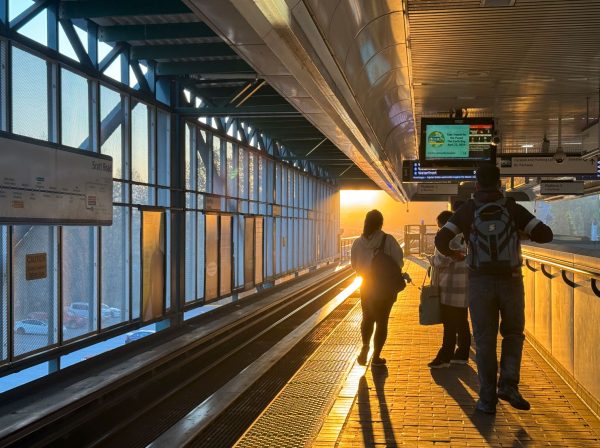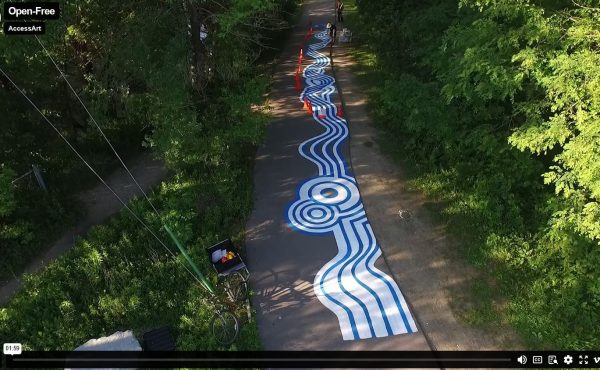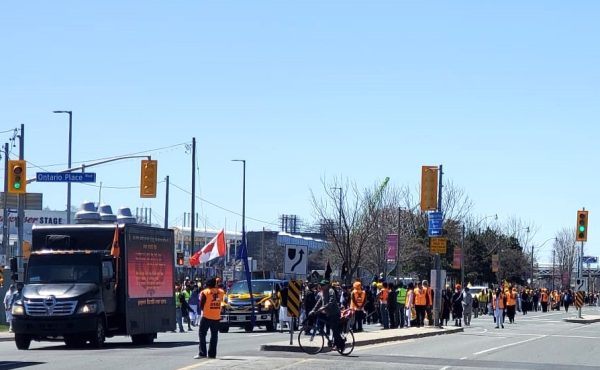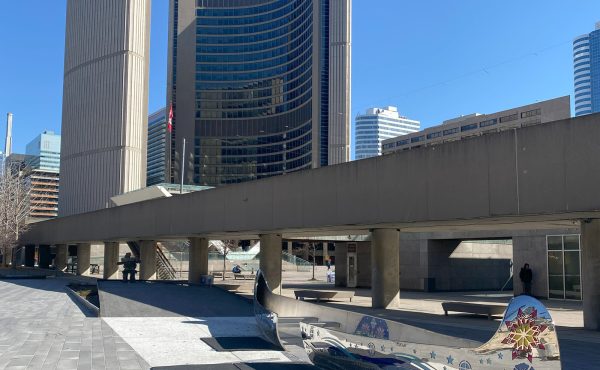In a recent ranking index, Toronto is listed as the third worst congested city in the world (after London and Dublin). The metric used by the company (Tomtom) is how long it takes to drive 10 kilometers. Toronto ranks high for terrible congestion by other indices with other metrics, too.
A recent article by the Star offered technology as the solution to the wicked problem of traffic congestion (again). Most of the suggested solutions (make streets ‘smarter,’ make maintenance easier, rethink the network, put a price on traffic) involved AI and other technologies. City Council recently decided to spend serious money to see if AI can help congestion at a few intersections.
Technology is admired by many for how it can increase our ability to collect data to gain insight into problems and come up with solutions that can save time and resources. We agree there is a value to efficiency and mobility technologies can help in that regard. But we would like to offer another perspective.
While there is a place for new technology to improve urban mobility, we believe questioning and addressing governance structures is a better place to start. Indeed, we note that even Kurtis McBride, the CEO of a traffic improvement consultancy and an engineer by training who was interviewed for the story, may not disagree. “I think people, procurement and thoughtful policy should precede technology investments,” he said. He also acknowledged that it would take more than tech to improve traffic.
The congestion problem and its purported tech-based solutions are steeped in power relations. Improving urban transportation is not merely a technical or engineering problem; it is a governance problem where it matters tremendously to ask: Who decides how to solve the problem? Who is at the table?
By “traffic” we usually mean motorists in private automobiles, who are often from higher income groups. But there are other commuters facing “congestion” and delays due to crowding, insufficient infrastructure, and so on. Some of those commuters are also on the same roads, but in buses and streetcars. We need to think about everyone whose mobility throughout the region is unnecessarily time-consuming.
The Toronto Region Board of Trade took it upon itself to create its own task force to address the traffic congestion that had propelled Toronto to the top of traffic congestion ranking indices. The task force is made up of 21 members, including McBride. All 21 members represent the private sector, and are mostly white, male, CEOs, presidents, or directors.
The task force lacks representation of diverse groups. Representation matters. For instance, Uber is represented, but not the TTC or other municipal transit operators from the region, or other entities in the transportation realm. Even the only two expert members (WSP Canada and Deloitte) are from the private sector. Where are the transportation and urban planners of Toronto and other municipalities? Why are community-based organizations not represented in the task force?
If we are discussing moving cars faster, we must do so in a way that is safe for everyone (think school zones, vulnerable road users such as pedestrians, older adults, people with disabilities etc). Solving traffic also needs to ensure the solutions are balanced in equitable ways where burdens and benefits of the solutions are fairly distributed among different parts of the city and its various communities. To ensure that, diverse representation on the task force is crucial.
And let’s remember that we are not starting with a level playing field. Not all commuters have the same resources, or flexibility of schedule experiences or opportunities to work from home. Modes of transportation are not all equal in efficiency or comfort. There are many whose mobility in the city is already limited—physically, logistically, socially, and economically. Are those voices part of the discussion? Are their needs being considered?
If we talk about technology without including these perspectives, we end up offering the most help to those who need it least. As Germaine Halegoua wrote in her book Smart Cities, “Algorithms, big data, and AI may change how and what decisions are made, but not what the underlying apparatus and sociopolitical infrastructures that support and carry out these decisions or whom these decisions benefit the most.” Technology is never neutral.
It is an oversimplification to believe that new technology will get us “unstuck.” Transforming decision-making is the place to start. This could begin with the inclusion of all stakeholders. Diversify the task force to bring diverse solutions to the many problems that contribute to traffic congestion, towards more equitable solutions.
McBride says congestion “isn’t an intractable problem.” We disagree. There is a reason we call issues like traffic “wicked problems,” because they are intractable: they are dynamic and have many sources. They need multiple solutions and the participation of diverse groups—especially those most negatively affected by the problem.
We should not assume that it is clear what the problem even is. It is important to ask ourselves whose problem we are solving. Whose time really counts? We must think beyond private automobiles when we think about who is impacted by traffic.
How do you solve a problem like Toronto traffic? Our answer is: you begin by acknowledging that it is indeed an intractable problem whose solution requires the meaningful participation of diverse stakeholders.
Improving urban mobility is a complex topic that no one column and no one “solution” can answer alone. It is important to have extended, public conversation. We encourage further response, so the conversation can continue.
Photo by Donovan Wood





4 comments
“By “traffic” we usually mean motorists in private automobiles, who are often from higher income groups. ” This is a bogus statement. There have been countless studies on how the working poor rely on cars and it was one of the reasons why the NDP has been against road tolls.
Here is a simple technological fix. Give the building department a calendar and teach them how not to schedule concurrent projects resulting in multiple sidewalk and road closures in the same area. Be they their own maintenance or permits to private construction projects. I have even walked down a busy street to find sidewalks on both sides of the street closed at the same time by two different construction projects. Are the planners permitting this really that clueless?
Do all those “countless studies” cover Toronto/GTA? Because I agree, in the US, working poor need cars to get from their semi-rural home (could be just a trailer) to their Kwik-E-Mart jobs. That’s because there is no transit, no sidewalks, and bicycling is often way too dangerous to contemplate.*
That is not the case in Toronto or the GTA. Witness the service increases on transit routes that run to the various Amazon warehouses in Toronto and Brampton and elsewhere. Owning a car in the GTA will actually make you poorer. Annual transit passes are going to be less than insurance on even a hoopty car. And leasing a car to become an Uber or Lyft driver is not, in my estimation, a particularly financially sensible course.
* I just returned from a (driving) trip that covered a lot of Appalachia, including western Virginia, North Carolina, West Virginia (ouch, a lot of struggling rural areas there) and central rural Pennsylvania. No question there were a lot of beat-up cars sitting by the mobile homes down in the hollers.
It’s actually not as complex as it is made out to be in this article and generally. The only way to meaningfully reduce gridlock is to remove a significant number of cars from the road. Any scheme that does not take cars from the road is a band-aid of wishful thinking.